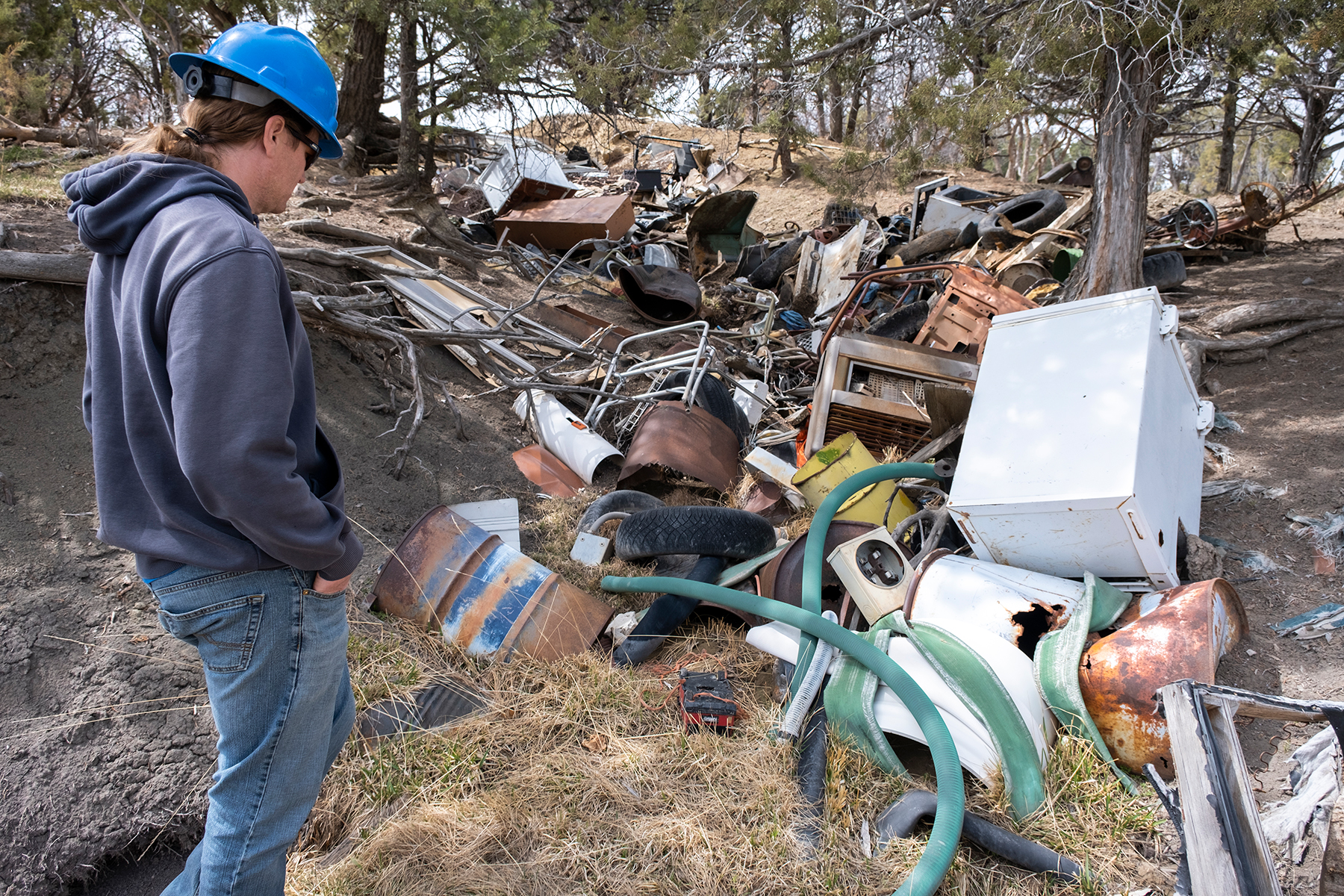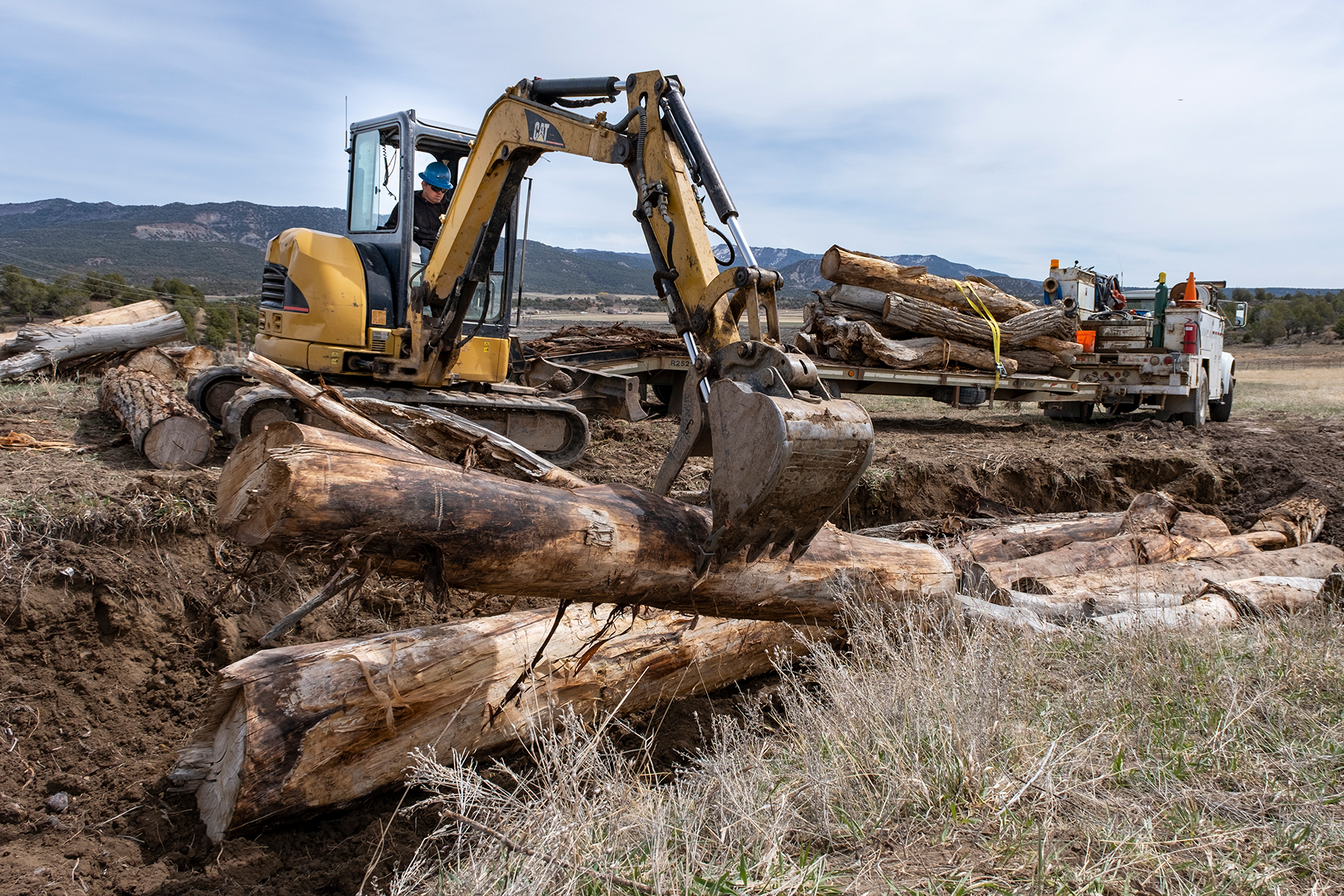The Southern Ute Environmental Programs Division (EPD) is currently working to clean up historic landfills and dumpsites that were identified on a tribal land assignment in the Spring Creek drainage. “Some of these dumpsites were located in irrigation ditches with water actively flowing through them,” explained Environmental Programs Division — General Assistance Program Manager, Jeff Seebach. “Debris found at this location can leach chemicals into the water harming or even killing aquatic life, as well as impacting downstream water quality or even well water used for drinking.”
Illegal dumping causes harm to tribal lands. “In the past, it was a common practice to throw large appliances, tires, etc. near streams and rivers to prevent erosion,” Seebach explained. “However, this ends up causing more harm than good. These items can contain chemicals that can be harmful to humans and the environment by seeping into soil thus causing danger to those that utilize the land [or water downstream].”
The Environmental Programs Division is working to clean up these historical dumpsites and improve water quality in the process. It was a widespread practice in rural areas for farmers, ranchers, and landowners to use discarded materials and unwanted appliances to try and slow down erosion areas, especially drainages and gullies prone to washing out in the rainy season — a practice that endured for a better part of the past century.
“The real take home in this is that what we are seeing there, on that assignment, is a historical practice that was widely accepted,” EPD Division Head Mark Hutson explained. “We have better techniques now to control erosion. We have ecologically safe ways to dispose of these things now.”
“The Tribal Utilities Division takes the waste and disposes of it properly, so there is really no need to do this now, there are more environmentally friendly ways to dispose of it — back in the day they didn’t have those options,” Hutson said. “Times have changed, and we are more aware of our environment now.”
“These types of materials, residual gasoline and oil, lead and lead acid from batteries, coatings on hoses, eventually it all leaches out, into the pasture and eventually into the creek,” Hutson emphasized. “It may take years to flow down, but the flows eventually get down to the creek and [negatively] impact wildlife.”
The company in charge of the cleanup and disposal, contracted with EPD, is Alpine Enterprise, LLC. Alpine Enterprise is a local company specializing in general agricultural and landscape services. “We have used them for similar projects, including stream restoration, exclusion fencing — to protect riparian habitat along creeks, they have even built water crossing gates and fencing for us,” Hutson said.
Alpine Enterprise is responsible for trucking out the debris for disposal at the landfill, all viable metal is being separated out for recycling in the process.
In the project neighboring Spring Creek, contractors are using cottonwood logs to slow down the erosion after the metal and debris is removed; the timber will solidify the soil over time. These cottonwood trees, which came from another project area, are now being put to use in this restoration effort.
“We are working to restore the environment and improve water quality,” Hutson emphasized.




